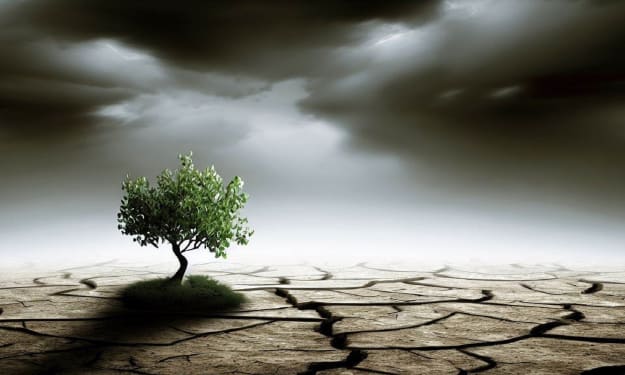The Earth is Getting Hotter: How Heat Domes and Greenhouse Gases Play a Part
The Earth's rising temperatures have become a pressing global concern

The Earth's rising temperatures have become a pressing global concern, with extreme heat events becoming more frequent and intense. Two significant contributors to this phenomenon are heat domes and greenhouse gases. Understanding their roles in driving the warming climate is essential in comprehending the urgency of addressing the climate crisis. In this article, we will explore how heat domes and greenhouse gases interact to make the Earth hotter and the implications for our planet and its inhabitants.
Heat Domes: A Culprit of Extreme Heat
Heat domes are high-pressure systems that trap hot air close to the Earth's surface. They form when specific weather patterns cause a mass of warm air to settle over a region. The hot air gets compressed downward, preventing it from rising and dissipating, leading to prolonged periods of scorching temperatures.
During a heat dome event, the trapped hot air intensifies heatwaves, making them more severe and long-lasting. As a result, regions experiencing heat domes face dangerous and potentially life-threatening conditions, with profound impacts on human health, infrastructure, and ecosystems.
The Role of Greenhouse Gases
Greenhouse gases, including carbon dioxide (CO2), methane (CH4), nitrous oxide (N2O), and fluoridated gases, play a significant role in the Earth's warming. These gases are released into the atmosphere through natural processes and human activities, such as burning fossil fuels, deforestation, and industrial processes.
When sunlight reaches the Earth's surface, some of it is absorbed and warms the planet. In turn, the Earth radiates heat back into space in the form of infrared radiation. However, greenhouse gases in the atmosphere trap some of this outgoing radiation, preventing it from escaping into space. This process is known as the greenhouse effect.
As greenhouse gases accumulate in the atmosphere, they enhance the greenhouse effect, causing the Earth's average temperature to rise—a phenomenon known as global warming. This increase in temperature contributes to the intensification of heatwaves and other extreme weather events.
Interplay Between Heat Domes and Greenhouse Gases
The relationship between heat domes and greenhouse gases is complex, but they are interconnected in driving the Earth's rising temperatures:
Greenhouse Gases and Global Warming: The accumulation of greenhouse gases in the atmosphere is the primary driver of global warming. As the Earth warms, heat dome events become more frequent and intense.
Heat Domes and Heatwaves: Heat domes intensify heatwaves by trapping hot air at the Earth's surface. The increased temperatures during heatwave events can further enhance the greenhouse effect, as warmer air can hold more water vapour, which is another potent greenhouse gas.
Feedback Loop: The combination of heat domes and increased greenhouse gas concentrations can create a feedback loop. As heatwaves become more severe due to heat domes, the demand for cooling systems increases, leading to higher energy consumption and greenhouse gas emissions from power generation.

Implications for the Planet and Humanity
The interplay between heat domes and greenhouse gases has far-reaching implications for the planet and its inhabitants:
Extreme Weather Events: The intensification of heatwaves under heat domes can lead to more frequent and severe extreme weather events, such as droughts, wildfires, and hurricanes. These events pose significant risks to ecosystems, agriculture, and human livelihoods.
Rising Sea Levels: Global warming, driven by greenhouse gases, contributes to the melting of polar ice and glaciers, resulting in rising sea levels. This poses a threat to coastal communities and low-lying regions, increasing the risk of flooding and erosion.
Health and Well-being: Extreme heat events, exacerbated by heat domes and greenhouse gases, pose significant risks to human health, especially for vulnerable populations. Heat-related illnesses, such as heatstroke and dehydration, become more common during heatwaves.
Economic Impact: The increasing frequency of heatwaves and extreme weather events can have significant economic consequences, affecting agriculture, infrastructure, and insurance costs.
Addressing the Climate Crisis
Addressing the challenge of rising temperatures requires concerted global efforts to mitigate greenhouse gas emissions and adapt to the changing climate. Some key strategies include:
Transition to Renewable Energy: Accelerating the shift from fossil fuels to renewable energy sources, such as solar, wind, and hydropower, can significantly reduce greenhouse gas emissions from the energy sector.
Sustainable Land Use: Implementing sustainable land-use practices, such as reforestation and conservation, can act as carbon sinks, sequestering carbon dioxide from the atmosphere.
Energy Efficiency: Improving energy efficiency in industries, buildings, and transportation can reduce energy consumption and associated greenhouse gas emissions.
Climate Resilience: Investing in climate resilience measures, such as building climate-resilient infrastructure and developing early warning systems, can help communities adapt to the impacts of heatwaves and extreme weather events.
Conclusion
The Earth's increasing temperatures are influenced by the interaction of heat domes and greenhouse gases. Heat domes trap hot air, leading to prolonged and intense heatwaves, while greenhouse gases enhance the greenhouse effect, causing global warming. The combination of these factors poses significant risks to the planet and humanity, with consequences ranging from extreme weather events to rising sea levels and health impacts.
Addressing the climate crisis requires urgent and collective action to reduce greenhouse gas emissions, transition to renewable energy sources, and build climate resilience. By working together to mitigate the drivers of a warming climate, we can strive to create a sustainable and livable future for generations to come.
About the Creator
Zeeshan May
I’m a Creative Content Writer,
I Possesses a Natural Flair for Crafting Compelling and Engaging Written Material.
Website : https://tap.bio/@zeeshanmay/
Email: [email protected]
Twitter : @KasheeeKi/






Comments
There are no comments for this story
Be the first to respond and start the conversation.